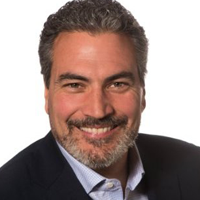
TVN Tech | Broadcasters Play To Cloud’s Strengths For Playout

While the rapid adoption of cloud technology for news production during the COVID-19 pandemic is a hot industry topic, broadcasters are also steadily making progress in using the cloud to play out their programming.
COVID-19 has spurred some broadcasters to make the cloud a new part of their disaster-recovery (DR) strategies, while others are simply following through on plans that were already in place before March 2020 to shift some playout functions to public and private cloud platforms.
Sinclair Broadcast Group is in the process of moving three of its diginets to cloud playout on the Amazon Web Services (AWS) platform, under the control of Imagine automation software and TAG V.S. monitoring systems. Cable programmer Vice TV is now playing out its U.K. and French networks from the AWS cloud, using Amagi control software. And managed services firm Red Bee Media is building its own private cloud infrastructure to handle playback for its international roster of broadcast clients.

Phil Myers
“Playout did move to the cloud a lot earlier than live,” says Lawo CTO Phil Myers, who notes that live production in the cloud still faces latency and bandwidth challenges. While Lawo doesn’t have a dedicated cloud playout product, Myers says the company is working with the Canadian public broadcaster CBC as its builds a private cloud playout infrastructure at its new all-IP Montreal Broadcast Center.
AWS Continues Its Cloud Playout Course
AWS has been handling cloud playout for big programmers like Discovery for several years, and last December it announced a big deal with Fox Corp. to support ingest, production and playout for all of its businesses, including the Fox-owned stations, as it creates a new technology platform in the wake of the Disney/Fox merger. Claire Southey, principal solution architect for AWS, says that for the most part it has been business as usual for AWS despite COVID-19.
“Not much has changed for us in the last 12 months,” Southey says.
AWS has seen some new production applications for its cloud platform, particularly for the “AWS Local Zone” it has created in Los Angeles to help serve the Hollywood production community by placing compute and storage resources nearby. But in speaking with broadcast customers, Southey’s main question to them remains the same as it was before the pandemic.
“Who are the key application vendors you want us to work with?” Southey says. “Do you want disruptive, cloud-native companies or ones with experience in media and entertainment?”
Amagi Sees New Urgency
Amagi is one of those cloud-native companies. It first started using the cloud to deliver targeted commercials to cable headends in India and then gradually evolved to controlling regional program playout at the edge by running automation software through the cloud before moving to native cloud playout. Amagi co-founder Srinivasan KA says he has seen a big change in broadcasters’ acceptance of cloud technology since Amagi began experimenting with cloud playout back in 2014.

Srinivasan KA
“Over the past two or three years, we’ve been seeing a reasonably strong shift to cloud among broadcasters,” KA says. “A lot of it has been driven top-down, from the C-suite level, with a larger mandate to have flexibility and agility in their business model.”
Some of those broadcasters first tried originating new OTT services in the cloud, which was relatively low-risk and could be spun down quickly if financially unsuccessful. Others pursued using the cloud as a DR solution, giving them the same DR capability as a hardware-based solution at a much lower cost. A third route was moving other workflows to the cloud, such as storage or third-party vendor management. But KA now sees a new sense of urgency.
“They were kind of nibbling at edges if you will,” KA says. “Obviously COVID helped shift attitudes dramatically. You’d be surprised by the number of calls I got in the last four or five months, asking ‘What happens if I’m shut out of the facility? What can I do? I need to have a backup plan.’”
Sinclair Shifts Diginets To Cloud Playout
Sinclair’s latest cloud initiative builds on a proof-of-concept it did back in 2017, when it used the Microsoft Azure cloud and Imagine automation software to launch KidsClick, a three-hour children’s programming block that Sinclair distributed to its stations over LTN Global’s IP terrestrial network. KidsClick was later discontinued for business reasons, but the launch proved that the cloud was a viable playout option, says Sinclair EVP and CTO Del Parks.

Del Parks
“We’re really looking to the cloud for the future in terms of our content management, playout and distribution,” Parks says.
This month, Sinclair started using the AWS cloud to originate the diginets Charge, Comet and TBD, which previously were played out from Sinclair’s facilities in Palm Beach, Fla., and Las Vegas with traditional on-premise servers. The channels will be delivered to stations using LTN Global’s IP network, which Sinclair has been using to distribute its diginets for several years.
“It’s pretty much an IT solution all the way through to the end at the TV station, where we convert it back to video and mix it into our [ATSC] 1.0 signal,” Parks says. “At the end of the day, it gives us a better workflow for ingesting content and treating content, which is what we’ll move to in the near future.”
Sinclair has been running the three diginets in shadow mode for several weeks. In addition to the diginets’ core programming, all commercials and promo content are also going directly to the cloud.
“If we’re going to be cloud-based, we’re going to deliver the media to the cloud in the first place,” says Mike Kralec, Sinclair VP technical operations and deputy CTO.
While playing out broadcast channels from the AWS cloud is new for Sinclair, it has already been using AWS to originate its OTT programming. Parks says that Sinclair continues to work with Microsoft Azure, among other cloud vendors.
While some of the functionality is different, the model for launching an OTT channel is a good template for launching new programming streams with the ATSC 3.0, or NextGen TV, broadcast standard, of which Sinclair has been a key supporter. Sinclair already has about six 3.0 markets on-air, with plans to launch many more in the next year as it seeks additional revenues using the new IP-based standard.
“As we start to roll out more features for NextGen TV, more and more of those features will depend on the flexibility that IT and cloud offer,” Parks says. “When you’re spinning up channels or spinning down channels, this gives you a certain amount of agility.”
More Vendor Collaboration In IP World
One of the flexibilities of cloud playout is the ability to monitor program playout from anywhere via a Web interface, versus having dedicated operators in a centralized master control room. A key partner on the Sinclair playout project is TAG V.S., which has integrated its monitoring and probing software with Imagine’s Versio automation software. Operators get a mosaic of the channels with the ability to grab a single feed and view it in detail.
TAG V.S. Chief Commercial Officer Kevin Joyce says that the Sinclair project is a good example of how vendors are collaborating on a deeper level in today’s IP world.

Kevin Joyce
“Imagine, AWS and TAG are all working very closely together to provide a solution,” Joyce says. “Imagine has a multiviewer, but because this is a pure-play cloud solution, Imagine reaches out and works with TAG in this particular case. That’s happening more and more.”
While Sinclair is taking a traditional approach to monitoring, TAG V.S. has recently developed what it calls “adaptive monitoring” for programmers looking to play a high volume of OTT channels from the cloud. Since getting a real-time, dedicated monitoring output from the cloud and decoding it costs money, customers can choose to do a light layer of monitoring. That could mean grabbing a snapshot of the feed perhaps once a second and getting a thumbnail or grabbing only the I-frames from the compressed video. If they detect an issue, then they can choose to pay for full monitoring of the feed until the problem is solved.
“For the scale and amount of channels media companies want to deploy, working on deploying thousands of channels, the economics become really inhibiting,” Joyce says. “This gives them the ability to monitor efficiently.”
New Efficiencies And A Hybrid Cloud Approach

Tim Bertioli
Seeking efficiencies in launching new services is what first drew Vice TV to working with Amagi for its international channels. After the company launched channels in the U.K. with Sky and in France with Canal Plus back in 2016 using traditional playout hardware from a managed services provider, Vice TV explored different options for starting a new service in New Zealand, says Tim Bertioli, Vice Media Group SVP of global media operations. Following up on a proof-of-concept he had first researched when he worked at NBCUniversal, Bertioli decided to adopt a hybrid cloud approach.
He used Amagi’s Cloudport software to control the Vice New Zealand channel through the AWS cloud, while relying on a local edge server at Sky New Zealand to actually play out the content. Vice TV programming from the U.S. was uploaded to the AWS cloud from a transfer server in Brooklyn using the Amagi transfer tool, and then would appear in the Amagi control UI. Bertioli could then watch the download of the programming to a local playout server in New Zealand. The Amagi solution was both cost-effective and highly reliable.
“We launched a feed in New Zealand without anyone from my team having to go to New Zealand,” Bertioli says.
Following on that success, Vice TV moved management of all of its international channels, which include services in Belgium and Israel, to Amagi. That allowed it to deliver the content once and use one interface to control it. But it still relied on playout at local edge servers at its affiliate partners. Since Amagi now has evolved to offering native cloud playout with AWS, Vice has since moved playout of its U.K. and French channels to the AWS cloud, distributing feeds directly to the affiliates for air.
Adapting to new capabilities and learning how to exploit them is fundamental to the new thinking required to work in the cloud, says Happy Robotz principal Peter Wharton, who is consulting with Sinclair and Fox on their current cloud playout initiatives.
“Anybody moving to the cloud should be looking at a process of continued improvement,” Wharton says. “Throwing away stuff is what makes the cloud valuable, doing away with hardware and cables.
In the cloud, you can build up a whole separate system in parallel, test it, then cut over to it.
“There’s the opportunity to constantly improve,” he says. “It’s a new mindset. Instead of ‘Let’s get it working and lock it down,’ it’s more of an experimental, opportunistic approach.”
Broadcasters such as Sinclair and Vice are increasingly shifting playout functions to cloud platforms, seeking more flexibility and agility there and testing the waters with disaster recovery strategies, OTT channels and diginets. “In… Click To Tweet































Comments (0)